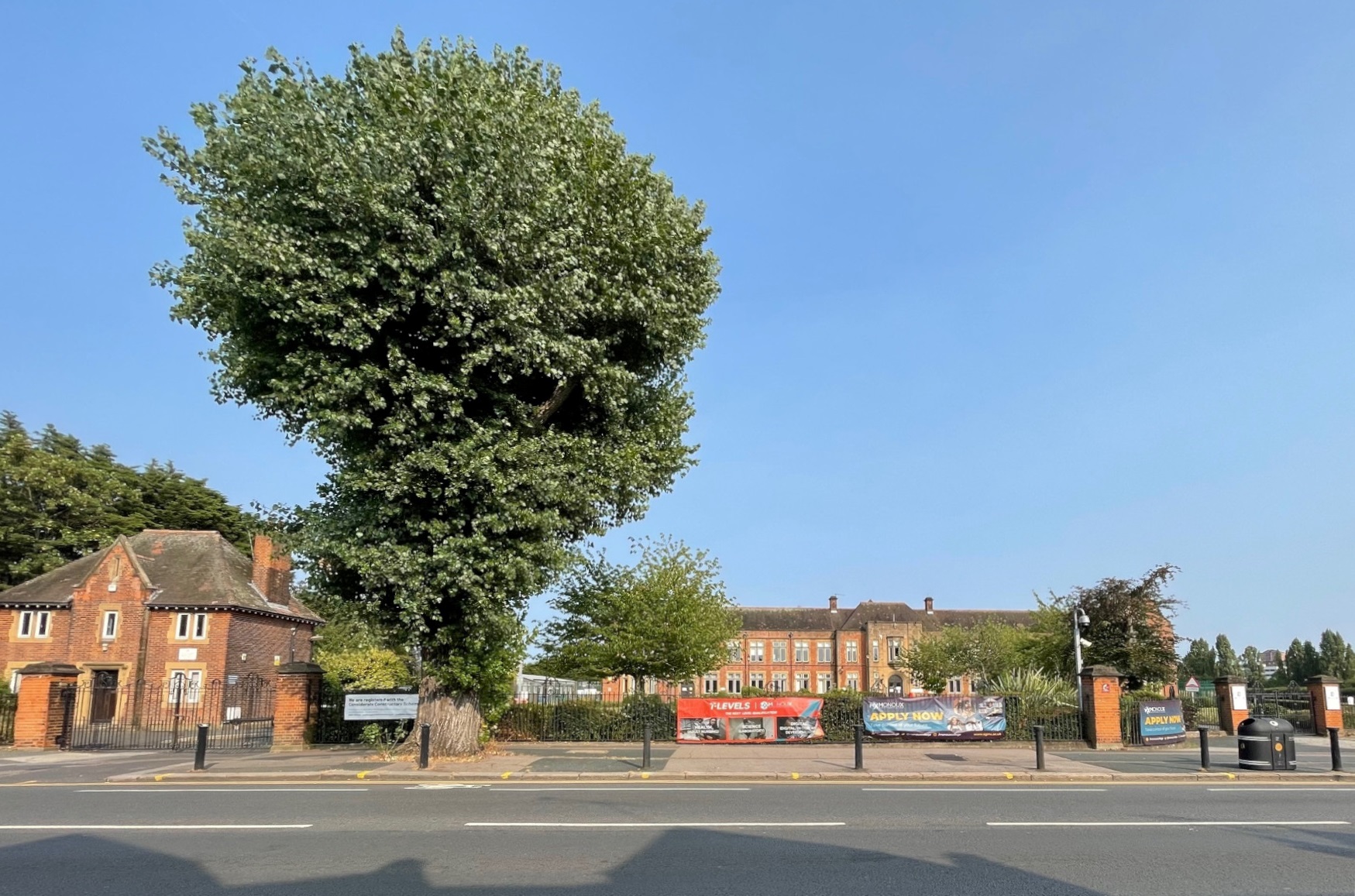Sir George Monoux Sixth Form College (Waltham Forest)
Brief Description
Sir George Monoux College moved to its present location in Walthamstow in July 1927, but the origins of the school date back to 1527 when Sir George Monoux founded a school and almshouses adjacent to the parish church of St Mary Walthamstow. For over three centuries the school remained in Walthamstow Village but it then moved twice in the C19th before the site was purchased from the Chestnuts Farm Estate for the new school, built by Essex County Council. The main school building has a long red brick facade, set back from the main road behind an expanse of lawn and formal gardens, with sports fields on either side.
Practical Information
- Previous / Other name:
- Chestnuts Farm Estate
- Site location:
- 190 Chingford Road, Walthamstow
- Postcode:
- E17 5AA
- What 3 Words:
- doctor.basin.dame
- Type of site:
- Institutional Grounds
- Borough:
- Waltham Forest
- Open to public?
- No
- Opening times:
- Special conditions:
- Facilities:
- Events:
- Public transport:
- Tube: Walthamstow Central (Victoria) then bus; London Overground: Walthamstow Central then bus. Bus: 34, 97, 215, 357, SL2
- Research updated:
- 23/08/2024
- Last minor changes:
- 24/08/2024
Please check with the site owner or manager for latest news. www.monoux.ac.uk
Full Site Description
Sir George Monoux (1465-1544) was a successful Bristol merchant, trading in cloth and other goods, who had come to London in 1502. In 1507 he acquired a country seat in Walthamstow called ‘Moons’ on a site that is now marked by Monoux Grove off Billet Road. He remained close to Walthamstow and died here on 8 February 1544. During his lifetime he held numerous important positions, including Master of the Drapers' Company on a number of occasions, and was Sheriff of London in 1509. By 1514 he was Lord Mayor of London, and in 1523 he was elected to Parliament as a Burgess for the City. He was an important benefactor to Walthamstow, where in 1527 he founded almshouses and a school having acquired a plot of land by the parish church. The Monoux Almshouses (q.v.), consisting of 14 houses, together with a Grammar School for Boys were designed and built to Monoux's own specification on land he acquired on 16 June 1527 from the Prior and Vicar of St Mary Walthamstow (q.v.) so that he could build ‘houses for pore folks and the edification and building for a Schole master and a ffree scole’. He was later buried in St Mary's Church in the Monoux Chapel. In his will he left an endowment to pay the salaries of a schoolmaster and parish clerk and provided for the maintenance of the almshouses and school in perpetuity out of the proceeds of his estate; however the trustees apparently shirked their duties and the almshouses fell into disrepair. In 1782 Walthamstow Parish took over the charities and the building was thereafter maintained.
Monoux School moved to new premises in 1819 (in West Street, Walthamstow?) although between 1878 and 1886 it was closed following the death of the schoolmaster. The school then re-opened in temporary premises until moving to a new building in the High Street in 1889, now gone. In July 1927 the school moved to its current location on Chingford Road, the new buildings constructed on a site that had been part of the Chestnuts Farm Estate, which was owned in the C17th by Anthony Lowther, brother-in-law of William Penn who founded Pennsylvania. Part of the former estate had been purchased by Walthamstow District Council in 1919 in order to build its new Town Hall complex. The school, built by Essex County Council, has a long frontage of red brick with stone frontispiece and 'Jacobethan trimmings', 'a characteristic grammar school type of between the wars' (Pevsner). A small red brick lodge stands adjacent to the railings at the north of the main school building. The western part of the building was rebuilt in 1955, following bomb damage in 1940. It was a grammar school for boys from 1959-69, then becoming a comprehensive until 1986, when it became a Sixth Form College and girls were admitted. In 1993 it became an Incorporated College.
The school premises and facilities expanded over the years, with classrooms set around 2 courtyards added in 1933 behind the main block, one of these courtyards housing a war memorial of 1949. The Centre, designed by architects van Heyningen & Haward, was added in 1990, with an extension overlooking another courtyard. Recent additions include the Brockman Building in 2003 and the Drapers Building in 2004, the latter recalling the school's original founder and cloth merchant Sir George Monoux.
Sources consulted:
Christopher Charles Pond, 'George Monoux's School, Walthamstow, 1527-1977' (Walthamstow Antiquarian Society, 1977); Walthamstow and Chingford Almshouse Charity: https://wcac.org.uk/history/; Bridget Cherry, Charles O'Brien and Nikolaus Pevsner, 'The Buildings of England, London 5: East' (Yale University Press, New Haven & London, 2005 ed.)
Further Information (Planning and Conservation)
- Grid ref:
- TQ375903 (537557,190370)
- Size in hectares:
- Site ownership:
- Sir George Monoux College
- Site management:
- Sir George Monoux College
- Date(s):
- 1927
- Designer(s):
- Essex County Council (1927)
- Listed structures:
- None
- On National Heritage List for England (NHLE), Parks & Gardens:
No- Registered common or village green on Commons Registration Act 1965:
No- Protected under London Squares Preservation Act 1931:
No
Local Authority Data
The information below is taken from the relevant Local Authority's planning legislation, which was correct at the time of research but may have been amended in the interim. Please check with the Local Authority for latest planning information.
- On Local List:
- No
- In Conservation Area:
- Tree Preservation Order:
- Not known
- Nature Conservation Area:
- No
- Green Belt:
- No
- Metropolitan Open Land:
- No
- Special Policy Area:
- Other LA designation:
- None
Photos
Sir George Monoux College, August 2024. Photograph Sally Williams
Click a photo to enlarge.
Please note the Inventory and its content are provided for your general information only and are subject to change. It is your responsibility to check the accuracy.







